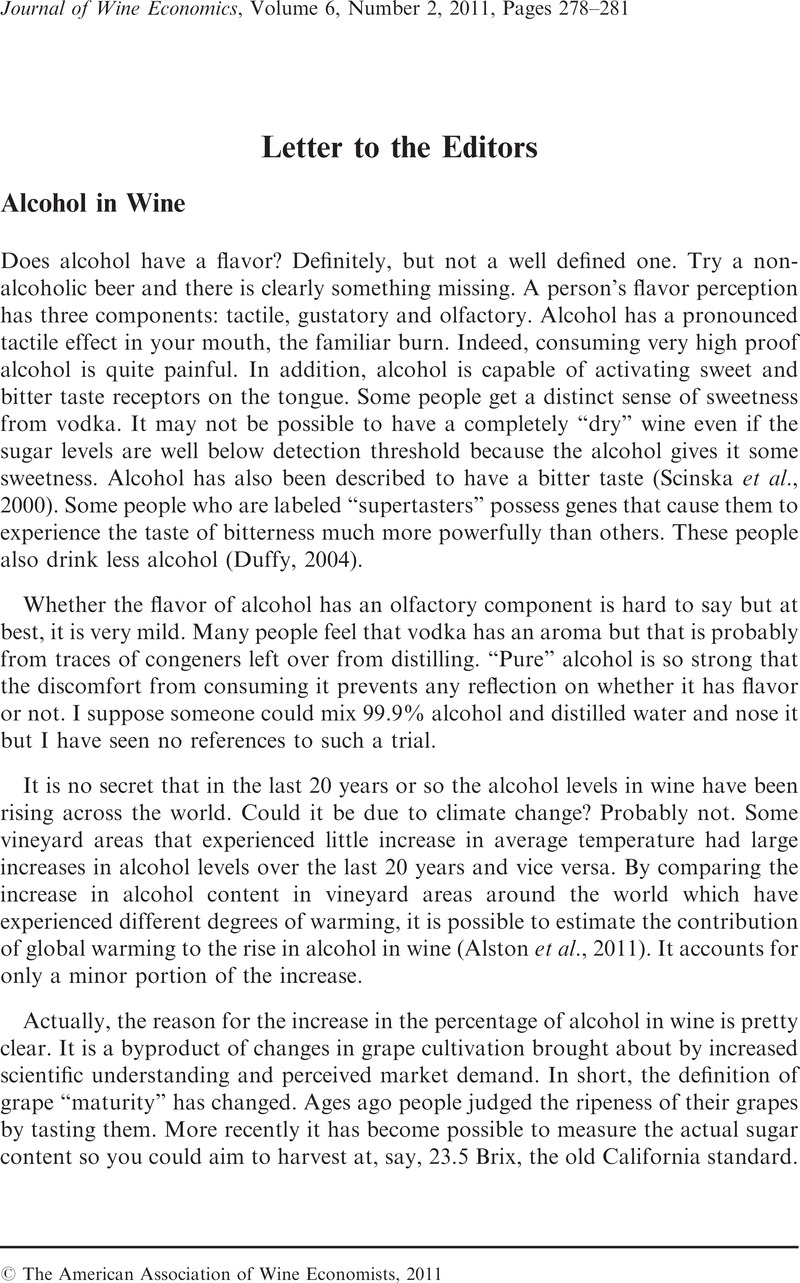Crossref Citations
This article has been cited by the following publications. This list is generated based on data provided by Crossref.
Marks, Denton
2015.
Seeking the Veritas about the Vino: fine wine ratings as wine knowledge.
Journal of Wine Research,
Vol. 26,
Issue. 4,
p.
319.
Chatterjee, Ayan
Pahari, Nibedita
Gerdes, Martin
and
Bajpai, Ram
2022.
Analyze the Effect of Healthy Behavior on Weight Change and Its Conceptual Use in Digital Behavioral Intervention.
p.
222.





